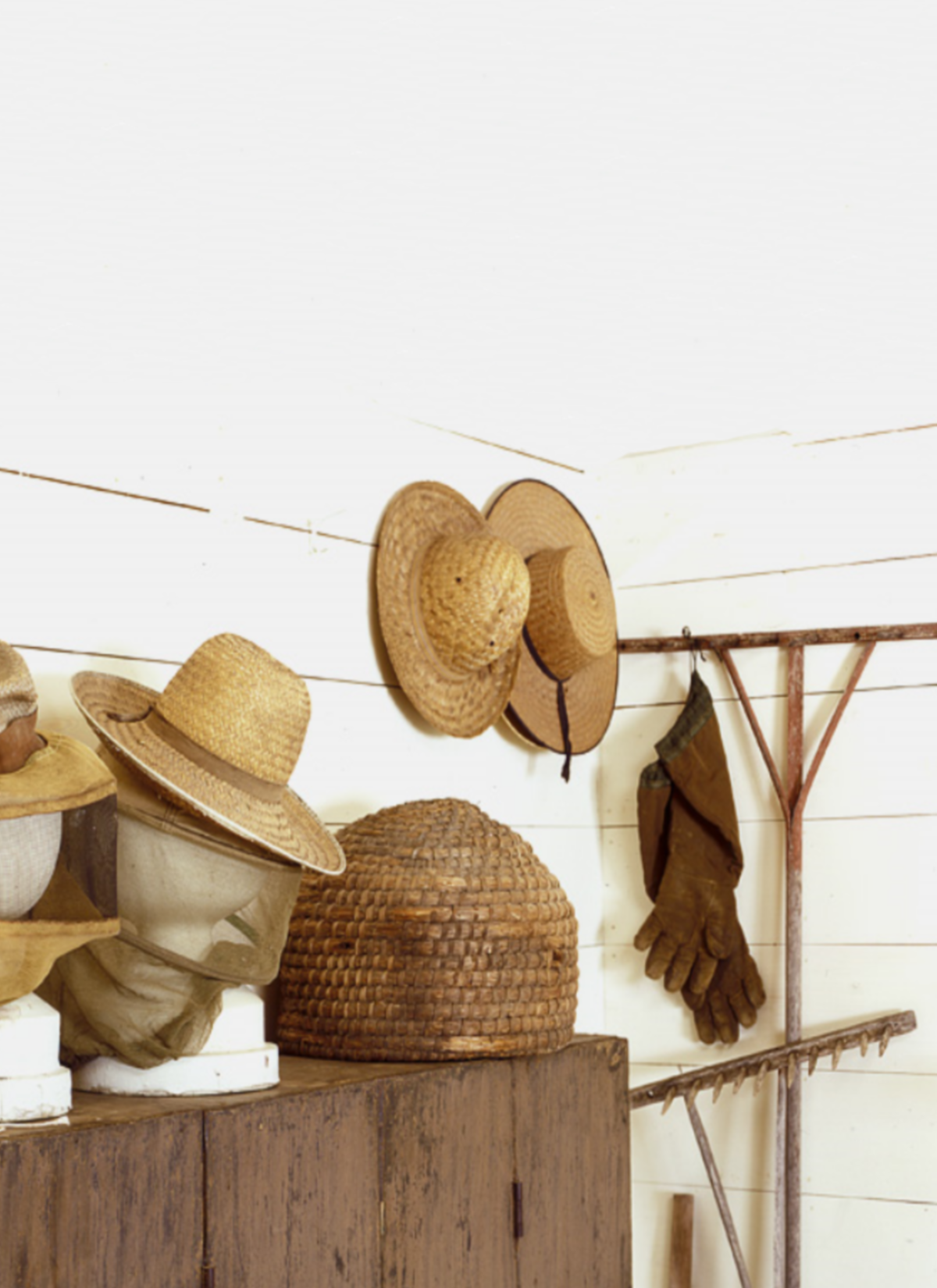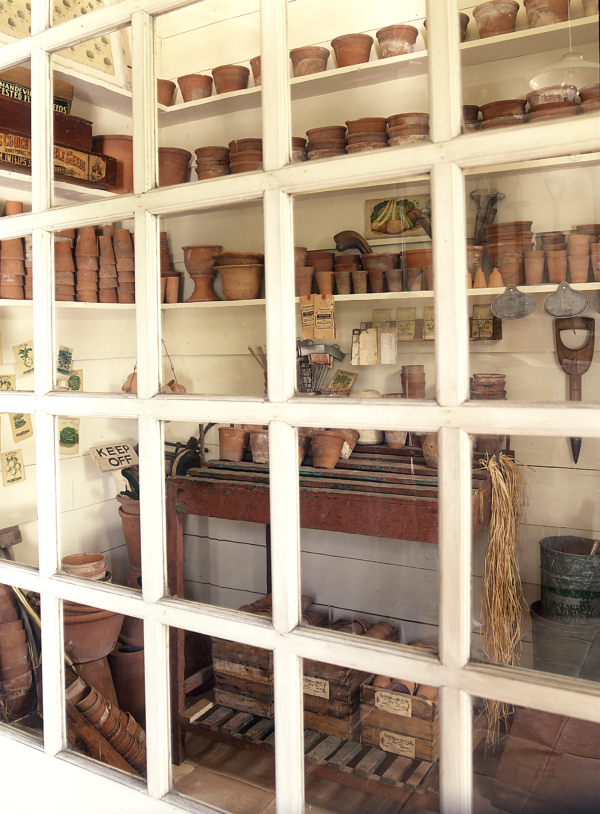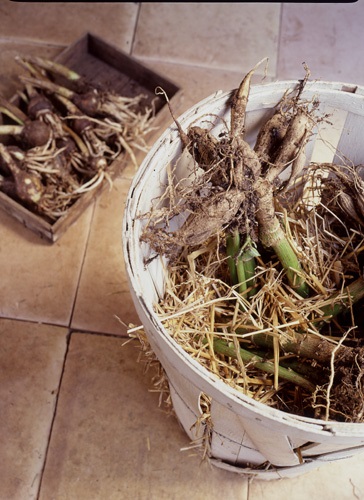Putting Your Garden to Bed

photography by Tom McWilliam
James Cramer embraced a life based on traditions of the past. The discovery of pottery shards and Civil War artifacts found while digging on his Maryland property inspired him to use old tools and methods to create his seven room gardens.
His dream of living in the country was influenced by his great-grandmother’s World War II Victory Garden turned self-sustaining vegetable farm. It took up the entire yard behind her white farmhouse where James Cramer spent the first fifteen years of his life. In his book, The Gardens & Accoutrements of James Cramer, he wrote, “It is said that you are impressionable the first years of your life and now I see where my love of gardening came from. I realize that the things I do now all came from my growing up years – even canning. I realize as I get older how important that time with my great-grandmother was and how it has shaped me as an adult.”
Thirty years ago, James went in search of re-creating that special feeling he so loved from his childhood. As happenstance may have it, he found himself on a country road on the outskirts of a town in western Maryland looking at a ‘for sale’ sign in front of a 19th century brick-clad farmhouse with an old log smokehouse and summer kitchen nestled behind it. He eventually learned that this had been the centerpiece of a 240-acre family homestead that sat on the edge of the Antietam Battlefield and was still owned by the same family who had lived there when the Civil War raged on its footsteps.
If it was the country life he wanted complete with a rich history – James had found it.
It’s all about the tools
James christened the home “Seven Gates” after the gates that separated the series of his newly created garden rooms. James, an author, magazine editor and garden stylist for Country Living, Cottage Living and Country Home magazines, found inspiration there for his work and was able to use them as his creative base for his life and career.
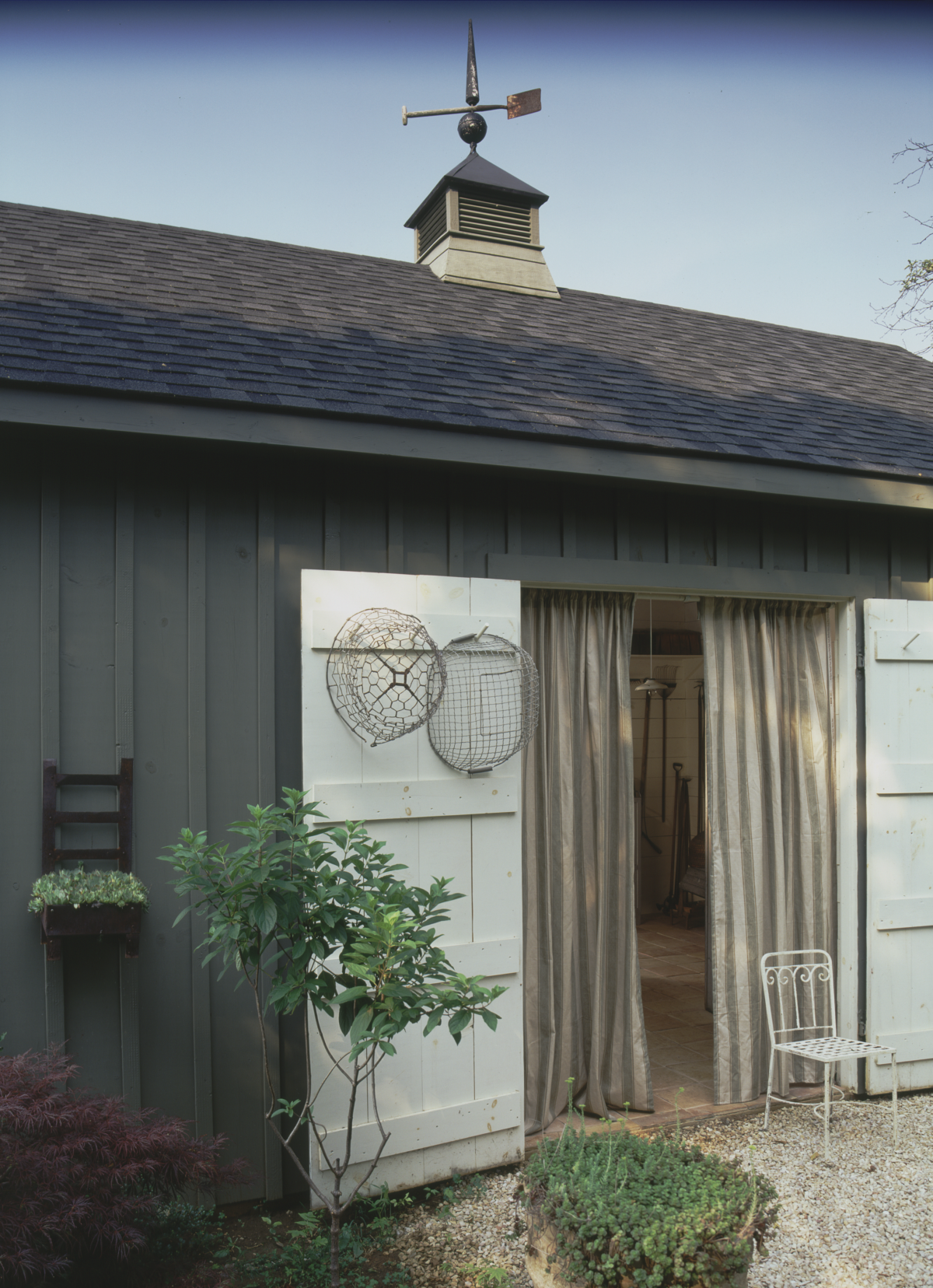
Along with the passion for country life came his love of everything old. His garden shed was filled with antique gardening tools, implements and containers used by gardeners of yesteryear, most of which he has used in cultivating his own gardens. Initially he bought them for props and photo shoots, but his fascination of cloches and terracotta seed starter pots grew to include beekeeper’s hats, potting tables, urns and much more. Before he knew it, James’ inventory was so big that he started an antiques business in nearby Hagerstown specializing in garden tools and accessories in order to handle the overflow.
Hoping the shop was the answer to help him pare down his collection, he found the opposite was true. It only enabled him to rotate out no longer used items to be replaced by other wonderful finds he’d discover.
Beekeeping hats and hives, antique rakes, shovels and hoes, and a potting room filled with terracotta pots and seeds collected from heritage seed companies, become the center of his gardening world. The feeling of history, peace and creativity collected in this space overflowed to his gardens and gave James a timeless sense of serenity.
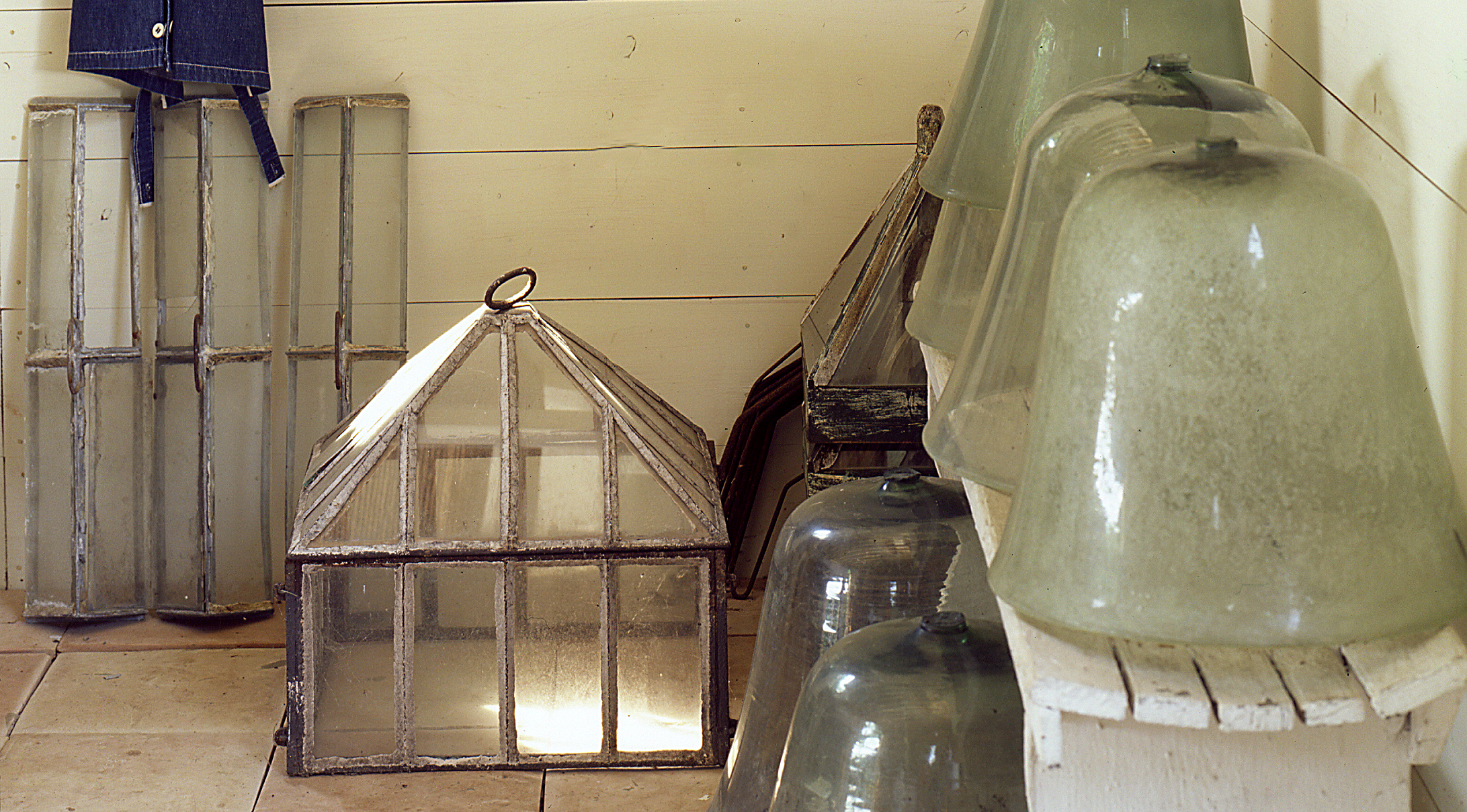
James, as a traditionalist, starts his seeds in small terracotta seed starter pots in the warmth of his greenhouse in the winter. When the weather turns from winter to spring and he feels the urge to get a head start on the growing season (and he simply wants to get outside), he’ll place cloches, clear glass bells that retain heat and moisture, over the seedlings after they’ve been transplanted into the ground. When the sun warms during the day, the cloches retain the heat and act as individual green houses keeping the ground and seedlings warm while the air is still cool in the spring and prolonging the life of vegetables into the coolness of the fall.
How to preserve plants & bulbs from season to season

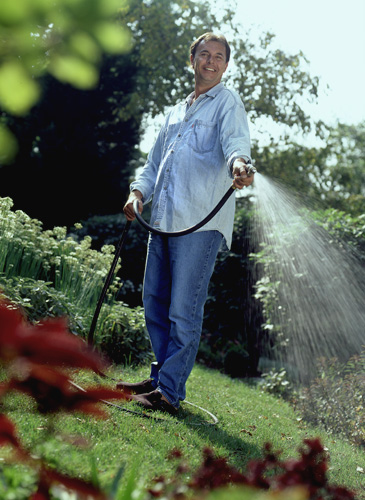
James Cramer has authored and co-authored several garden and holiday books, including: Window Boxes, Indoors & Out, The Gardens & Accoutrements of James Cramer, “Tis the Season: Christmas Eve with James Cramer, and A Simple Garden Journal.



